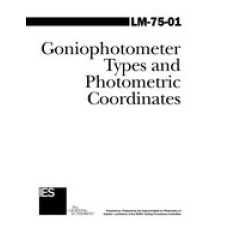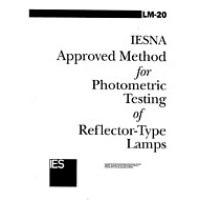IES LM-75-01
- Goniophotometer Types and Photometric Coordinates
- standard by Illuminating Engineering Society, 08/04/2001
- Category: IES
$18.00
$9.00
A goniophotometer measures the directional light distribution characteristics of sources, luminaires, media, and surfaces. Goniophotometers and coordinate systems are divided into three categories (A, B, and C), the different types originally designed to match the type of source being measured. But the advent of position sensitive lamps introduced a further complexity: Such sources could not be properly evaluated if physical changes in lamp burning position were required during a test.
This Guide features three main section including spherical coordinates explaining how the three coordinate systems used in photometry are really variations on the standard spherical coordinate system used in mathematics; coordinate systems describing Type A, B, can C coordinates with an illustration of the photometric angles applicable to each system; and goniophotometers presenting the Type A (horizontal axis), the Type B (vertical axis), and the Type C (moving detector or moving mirror) versions. Detailed figures are used to illustrate either (1) the directions of luminaire rotation or (2) how a moving photodetector or moving mirror can be used to test a fixed light source. Since any goniophotometer can be used to generate any coordinate system (with varying degrees of difficulty), all the equations needed to convert Type A and Type B coordinates to their Type C equivalent are presented in a separate annex.
 PDF
PDF
All of our standards document are available in PDF (Portable Document Format), an electronic, downloadable format.You will be able to download the file in your account downloads.
 Multi-User Access
Multi-User Access
After purchasing, you have the ability to assign each license to a specific user.
 Printable
Printable
At any time, you are permitted to make printed copies for your and your members' reference use.





